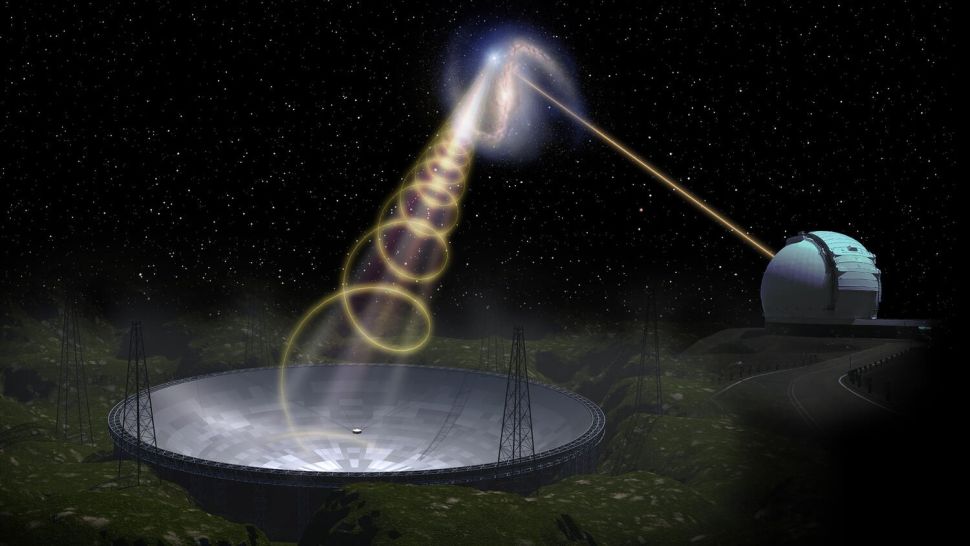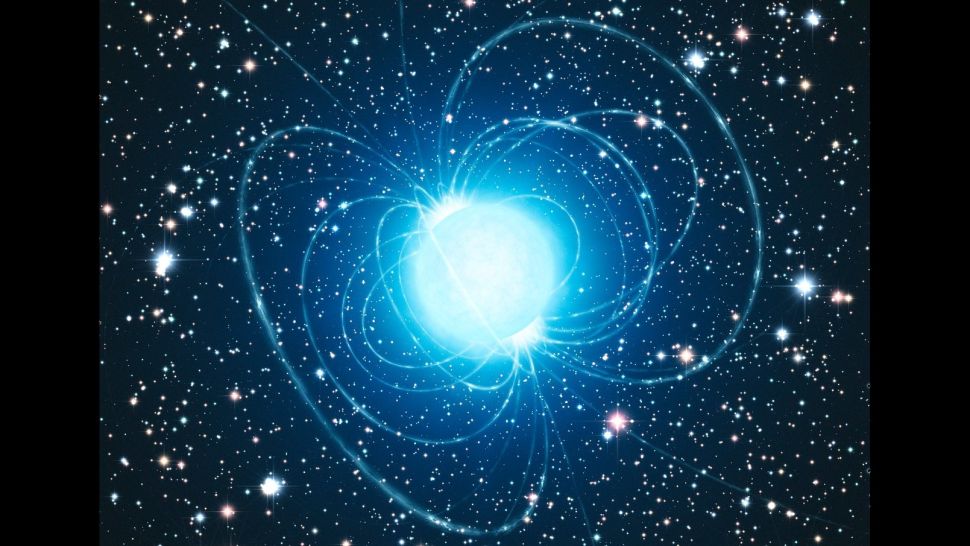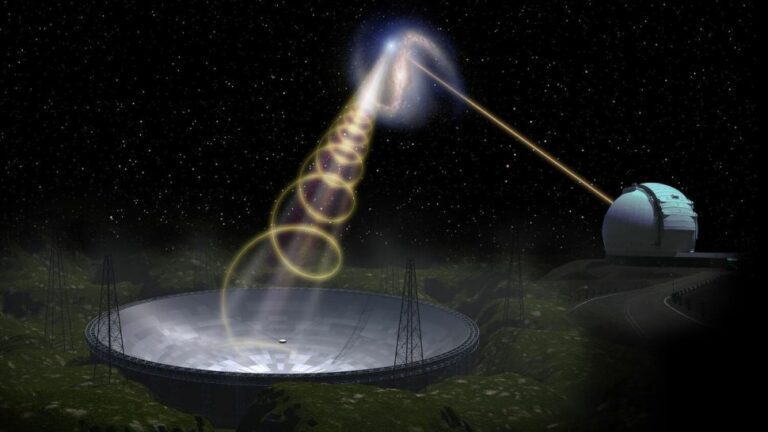Fast radio bursts with strange magnetic fields that repeat provide a challenge to the magnetar hypothesis.
New observations are challenging a hypothesis about what produces these energetic bursts of radio waves.
The puzzle surrounding what causes these unexplained millisecond-long bursts of radio waves from deep space has been furthered by the discovery of a recurrent fast radio burst (FRB) with a variable, polarized magnetic field.
One of astronomy’ greatest mysteries since their discovery in 2007, FRBs have remained a mystery for many years. They are very strong, producing as much energy in a split second as the sun does in three days. While others repeat, some FRBs just emit a single burst before going silent. Though one FRB has been found in our galaxy, the majority originate from faraway galaxies.
The most magnetic objects known to exist, highly magnetic neutron stars known as magnetars, are the leading suspects, at least for the recurring FRBs, but it is unknown what causes FRBs.

The magnetar concept has now been scrutinized by further observations of a recurring FRB designated as FRB 20201124A, and several contradictions have been discovered.
On November 24, 2020, the Canadian Hydrogen Intensity Mapping Experiment found FRB 20201124A. (CHIME). Scientists from China and the United States detected 1,863 bursts from FRB 20201124A over a 54-day period in spring 2021 using the Five-hundred-meter Aperture Spherical Radio Telescope (FAST), the biggest single-dish radio telescope in the world.
There were some fresh, perplexing finds among those explosions. Notably, the magnetic field’s intensity in the region of the FRB source changed during the course of the first 36 days of monitoring. Then it stayed steady for the following 18 days until going away. The radio signals also contained oscillating linear and circular polarization, strong circular polarization, and changes in polarization angle depending on wavelength. Polarization describes the direction in which radio waves oscillate.
These actions have never been observed in a FRB.
Bing Zhang, a distinguished professor of physics and astronomy at the University of Nevada, Las Vegas, and research co-author, said in a statement that the results “exposed a complex, constantly developing, magnetized environment that was never envisioned before.” The FRB source appears to be located within 1 astronomical unit of this magnetically active region, or 93 million miles (150 million kilometers), the usual distance between Earth and the sun.
But might a magnetar be that source?

Telescopes at the W. When the research team subsequently used them, The genesis of FRB 20201124A occurred in a barred spiral galaxy dubbed SDSS J050803, which is roughly 1.3 billion light-years away and resembles our own Milky Way galaxy very strongly. This finding was found by the M. Keck Observatory on Mauna Kea in Hawaii.
The measurements also showed that the location of the source of FRB 20201124A in the galaxy was somewhat unremarkable. Magnetars, on the other hand, are frequently found in areas with active star formation.
Massive stars that burst at the conclusion of their lifetimes after a cataclysmic collapse give birth to neutron stars. A magnetar is a kind of neutron star produced by exploding stars under specific circumstances. Magnetars may have originated from superluminous supernovas and gamma-ray bursts, according to certain theories. However, due to their short lifespan, such stars perish in the same star-forming zone where they were born. Particularly in galaxies with smaller abundances of heavy elements, gamma-ray bursts are more common (metals). The host galaxy of FRB 20201124A is rich in metals, though.
Neutron stars are produced by massive stars that explode at the end of their lives following a catastrophic collapse. A special type of neutron star, known as a magnetar, is created when stars explode under certain conditions. Some ideas suggest that superluminous supernovas and gamma-ray bursts are the sources of magnetars. Such stars, however, die in the same star-forming region where they were formed because of their brief lives. Gamma-ray bursts are more frequent, particularly in galaxies with lower abundances of heavy elements (metals). FRB 20201124A’s host galaxy is abundant in metals, nevertheless.
The results were published Sept. 21 in the journal Nature.
Do not forget to share your opinion with us to provide you with the best posts !




0 Comments